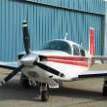Windshield cracks and "spider-ing"
-
Members Online
- larryb
- gdwinc
- Mikey30V
- BrentS
- coughtnit
- Marc B
- philiplane
- N201MKTurbo
- bluehighwayflyer
- Schllc
- Meshach
- EGFMooniac
- spaceman39a
- Will.iam
- 47U
- tailgator
- alextstone
- TheAv8r
- Hank
- Z W
- good2eat
- toto
- ragedracer1977
- takair
- Brian2034
- Lax291
- AndreiC
- gacoon
- Kirch56H
- Immelman
- MDMooney
- Utah20Gflyer
- GMBrown
- Marc_B
- SPEEDMOONEY


Recommended Posts
Join the conversation
You can post now and register later. If you have an account, sign in now to post with your account.